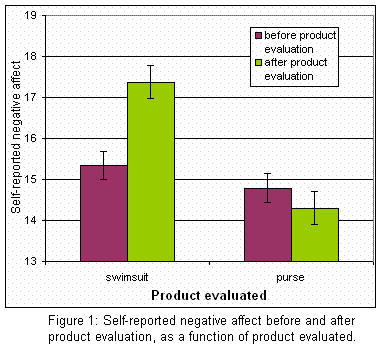The urge to smoke is a complex phenomenon that cannot be explained by nicotine dependence alone. A range of psychological factors—thoughts, feelings, and behavior patterns—also play an important role in smoking behavior. Among women in particular, smoking appears to be coupled with deep-seated concerns about body image (for a review, see Lopez Khoury, Litvin, & Brandon, 2009). This association can take different forms. For example, women might smoke cigarettes as a direct form of weight control. Less directly, women might light up as a way to cope with the shame of failing to meet cultural standards of thinness (Fiissel & Lafreniere, 2006). Indeed, reducing negative affect appears to be a potent motivator for smoking among women (Cepeda-Benito & Reig Ferrer, 2000). This week’s ASHES reports on a study that tested the hypothesis that among women smokers, the urge to smoke sometimes results from attempts to manage distressing feelings about body shame (Lopez Khoury et al., 2009).
Methods
• Participants were 133 female college student smokers who abstained from smoking for at least 1 hour before the study. They were recruited through advertisements, fliers, the psychology participant pool, and in-class announcements. They received either course credit or $30 for participating.
• Past work (cited by Lopez Khoury et al., 2009) demonstrates that asking women to try on swimsuits in front of a mirror is an effective way to produce feelings of body shame/dissatisfaction. Therefore, researchers randomly assigned participants to one of two conditions:
o Evaluating a purse and comparing it with other purses shown in photographs or
o Trying on and evaluating a swimsuit and comparing it with other swimsuits modeled in advertisements.
• At baseline and again immediately following conditioning, participants completed a series of measures about their body dissatisfaction, negative affect, and the urge to smoke.
• The authors hypothesized that women who tried on the swimsuit would experience more body dissatisfaction and a stronger urge to smoke compared with the comparison group. They also hypothesized that increased negative affect would mediate this relationship.
Results
• Body dissatisfaction: The swimsuit manipulation succeeded in making participants feel more dissatisfied with their bodies F (1, 132) = 19.74, p <.001.
• Negative affect: As Figure 1 shows, the swimsuit manipulation also resulted in a spike in negative affect. An ANCOVA controlling for baseline negative affect revealed a significant effect of condition, F (1, 132) = 21.83, p < 0.001, eta squared = 0.15, with participants who tried on the swimsuit reporting a greater increase in negative affect than their control-group counterparts.

Figure. Self-reported negative affect before and after product evaluation, as a function of product evaluated. Click image to enlarge.
• Urge to smoke: Those who tried on the swimsuit also reported a stronger urge to smoke in anticipation of relieving negative affect, F (1, 132) = 4.16, p < 0.05, although this effect was smaller (eta squared = 0.04).
• Mediation: Formal tests of the size of the indirect effect of negative affect were conducted using the Sobel test and the bootstrap approach. Results of both procedures were statistically significant (p‘s < 0.05). This indicates that the swimsuit manipulation increased the urge to smoke by increasing negative affect.
Limitations
• This study used an experimental manipulation of body dissatisfaction, which results in high internal validity. The manipulation also has a good deal of ecological validity: that is, trying on swimsuits and other garments in front of mirrors is something women do often. However, some aspects of the study design—particularly the laboratory setting and the repeated assessments of body dissatisfaction and negative affect—limit the sense of authenticity.
• Because the sample consisted of college women, it is unclear whether the results would generalize to non-college women or to men. Other mechanisms of smoking urge may be more powerful than body dissatisfaction and negative affect relief in these groups.
• The authors measured smoking urges but not actual smoking behavior.
Conclusions
This study indicates that feeling shameful about one’s body helps account for smoking urges among college women. These results add to our understanding of the psychological and social barriers to smoking cessation. In doing so, this research helps to explain why nicotine-dependence treatments alone are often insufficient for smoking cessation.
References
Cepeda-Benito, A., & Reig Ferrer, A. (2000). Smoking Consequences Questionnaire—Spanish. Psychology of Addictive Behaviors, 14, 219–230.
Fiissel, D. L., & Lafreniere, K. D. (2006). Weight control motives for cigarette smoking: Further consequences of the sexual objectification of women? Feminism & Psychology, 16, 327–344.
Lopez Khoury, E. N., Litvin, E. B., & Brandon, T. H. (2009). The effect of body image threat on smoking motivation among college women: Mediation by negative affect. Psychology of Addictive Behaviors, 23, 279-286.
What do you think? Please use the comment link below to provide feedback on this article.




